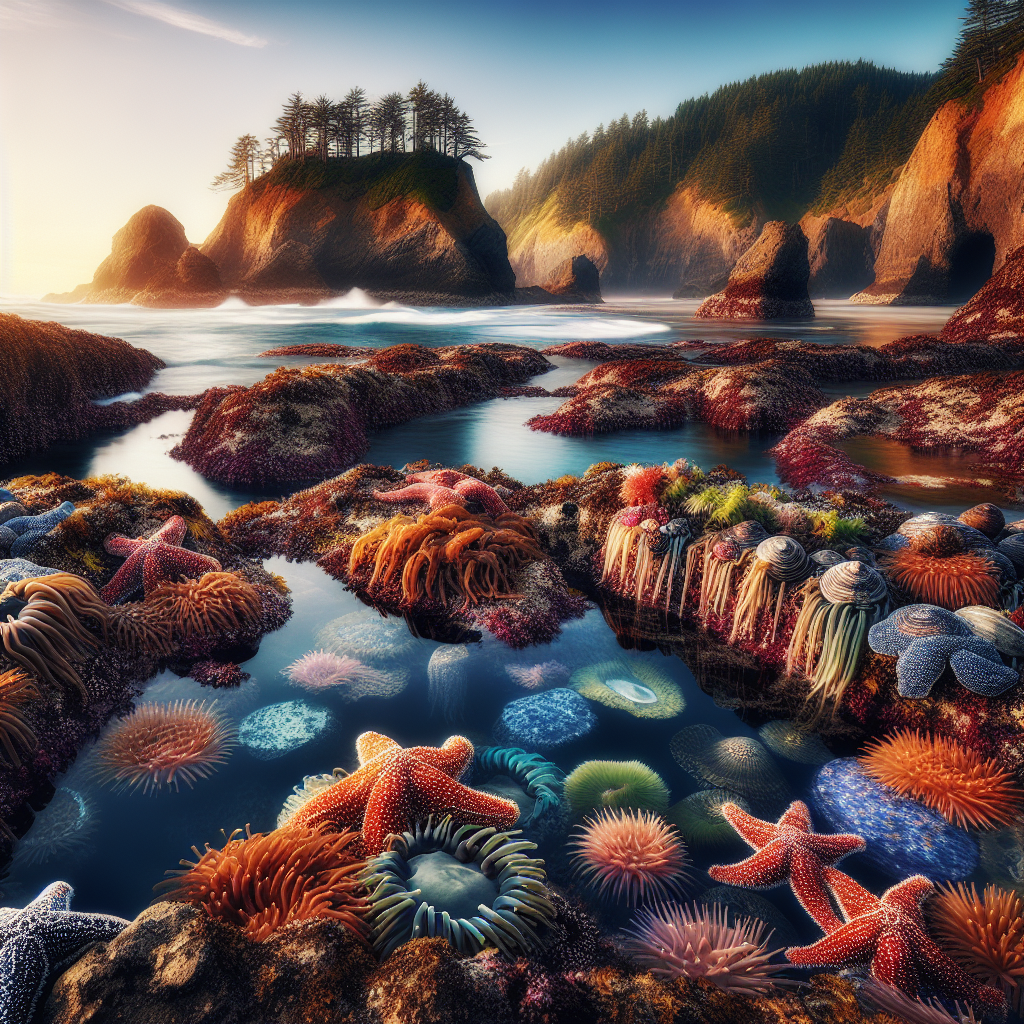Title: Dive into Oregon’s Wild Side: A Guide to Tidal Pool Exploration on the Oregon Coast
Introduction Nestled amidst the rugged beauty of the Oregon coast, tidal pools are dazzling ecosystems that showcase the rich diversity of marine life. These natural aquaria are home to colorful starfish, anemones, crabs, and countless sea creatures that change with the tides. As you begin your exploratory journey, remember that experiencing Oregon’s tidal pools is beyond just seeing; it’s about understanding, respecting, and cherishing Mother Nature’s magical choreography.
Understanding Tidal Pools – A Peek into Oregon’s Marine Life Tidal pools or tide pools are as enchanting as they sound. Found along the rocky coastline, they are the mini-ecosystems that form within rock crevices when the tide recedes, allowing a curious peek into aquatic life that usually remains hidden beneath the surging waves. The Oregon Coast, stretching from Astoria in the north to Brookings at the southern tip, is replete with such marvels.
Haystack Rock in Cannon Beach is famous for its abundant and accessible tidal pools. This is where you’ll spy the fascinating purple shore crab, or if luck favors, the elusive red octopus. Pacific City’s Cape Kiwanda too houses remarkable tidal pools. Be sure to look under the rocks—locals know this is where you’ll find intriguing critters like the mossy chiton or the striped shore crab.

Planning Your Tidal Pool Exploration Oregon’s tidal pool exploration is best based on the phase of the moon. To get the most out of your tidal pool exploration, plan your visit during low tides, which occur twice a day. However, the lowest (and thus, the best for viewing marine life) often happen early in the morning or later in the evening.
One local tip that seasoned explorers always bear in mind—the months between April and mid-July bring the most extreme low tides, providing access to typically hidden marine treasures.
Oregon-Specific Alerts and Considerations Not all that glitters on the Oregon coast is starfish, and not every pool is safe for exploration. Some areas, like Yaquina Head in Newport, are regarded as marine gardens and are protected by local laws. Tread thoughtfully and avoid disturbing the creatures in their home.
Do remember that coastal weather can change abruptly, especially in the afternoons. Always dress in layers and carry rain gear. Slippery rocks and erratic waves can pose challenges, so tread cautiously. It’s common among locals to carry a sturdy walking stick for stability when navigating through seaweed-slicked surfaces.
Appreciating the Flora and Fauna The vibrant life in Oregon’s tidal pools is worth every bit of the gaze. Delicate sea anemones display a wide array of colors, while the stealthy hermit crabs carousing the pools provide an engaging sight. Do notice the ochre sea stars, a creature holding an astronomical importance in the tidal pool food chain.
At the Cobble Beach tide pools within Yaquina Head Outstanding Natural Area, you’ll see the black turban snail, a jewel of the Oregon coast. Although popular among tourists, locals are privy to the fact that they feed at night and are best spotted during evening low tides.
Parting Words: The Ethos of Tidal Pool Exploration Visiting tidal pools is more than an exploration; it’s an organic learning experience, teaching us the importance of co-existence and respect for our marine life. The authentic Oregonian spirit includes care for our ecosystems, so keep that “leave no trace” principle in mind. Touch gently, tread lightly, and take only memories, leaving everything just as you found it.
In the end, it’s sharing the joy of discovery with the next visitor, just like a fellow Oregonian would. So pull on those boots, grab your exploration gears, and just follow the tides. You’ll find that every tidal pool on the Oregon Coast tells a unique tale, and who knows, you might stumble upon a story that’s never been told before.
